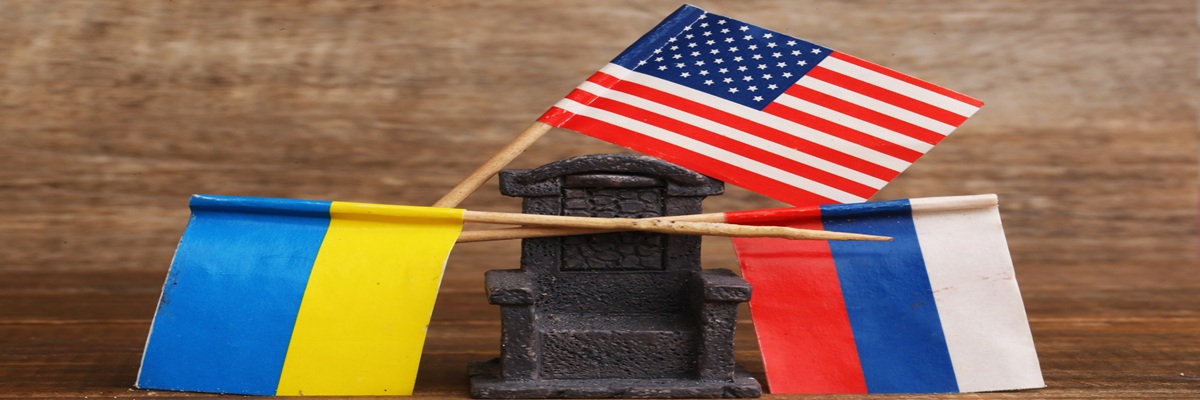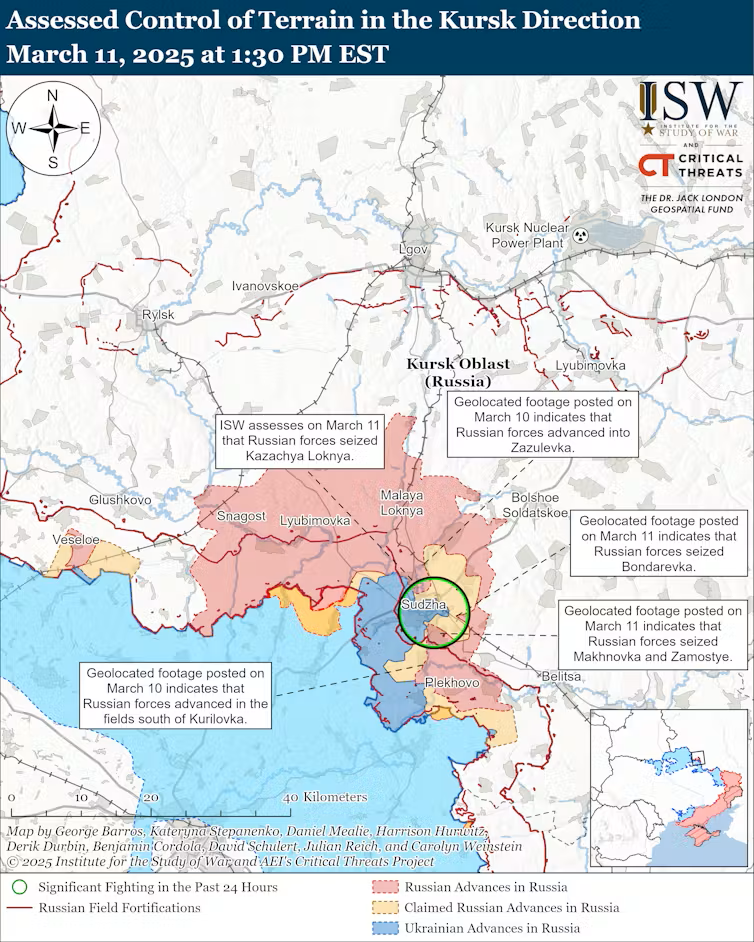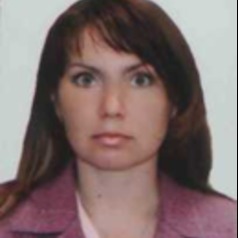Diplomacy
US and Ukraine sign 30-day ceasefire proposal – now the ball is in Putin’s court

Image Source : Shutterstock
Subscribe to our weekly newsletters for free
If you want to subscribe to World & New World Newsletter, please enter
your e-mail
Diplomacy

Image Source : Shutterstock
First Published in: Mar.12,2025
Mar.24, 2025
Less than a fortnight after Donald Trump and Volodymyr Zelensky had their now-notorious row in the Oval Office and US-Ukrainian relations appeared irretrievably damaged, the two countries have reached an agreement. After nine hours of negotiations behind closed doors in Jeddah, Saudi Arabia, negotiators signed off on a US proposal for a 30-day ceasefire, allowing the resumption of military aid and intelligence sharing by the US.
This does not mean that the guns in the war will now immediately fall silent. No ceasefire agreement between the warring parties – Russia and Ukraine – has been signed. In fact, it is not even clear how much detail is contained in the proposal and how much of it has already been discussed with Russia during earlier talks between senior US and Russian officials.
Nonetheless, the deal signals a major step forward.
From a Ukrainian perspective, it has several advantages. First, the major rift between Kyiv and Washington has at least been partially patched up. The minerals agreement – on hold since the White House shouting match on February 28 –is back on. Trump has extended an invitation to Zelensky to return to Washington to sign it.
Equally importantly for Kyiv, the resumption of US weapons deliveries to Ukraine and the lifting of the ban on intelligence sharing were part of the deal, and with immediate effect. This restores critical US battlefield support for Ukraine, including for Kyiv’s capability to strike targets deep inside Russia.
By contrast, the Russian president, Vladimir Putin, is now in a somewhat trickier position. He has to balance his war aims in Ukraine with the arguably more strategically important goal of rapprochement with the US.
Talks between senior US and Russian officials on February 18, in the Saudi capital Riyadh, seemed to indicate that Moscow had won significant concessions from Washington – including on retaining illegally occupied territory and no Nato membership for Ukraine.
These concessions may still be on the table, alongside other US offers to normalise relations and end Russia’s isolation from the west. But this does not mean that Russia will be in any particular hurry to bring the fighting in Ukraine to an end. The country’s economy has weathered western sanctions remarkably well so far.
Putin is also likely to be keen on capitalising further on the momentum that his troops still have on the frontlines inside Ukraine. And he is unlikely to want to sit down to talk about a ceasefire, let alone a peace agreement, with Zelensky as long as Ukraine still holds territory in the Kursk region inside Russia. While Ukrainian troops have come under increasing pressure there recently and are in danger of being encircled, it is likely to take Russia some more time to force them to withdraw completely or to surrender.

Putin is therefore likely to play for more time in an effort to push his advantage on the ground while avoiding upsetting Trump. The deputy head of the upper house of the Russian parliament, the Federation Council, and chairman of its international affairs committee, Konstantin Kosachev, signalled as much after the US-Ukraine deal was announced. He insisted that any agreements would have to be on Russian, rather than American – let alone Ukrainian – terms.
This indicates a willingness to talk but also signals that an agreement, even on a ceasefire, will still require further negotiations.
Pressure points
Playing for time will also allow Putin to avoid rebuffing the American proposal outright. To do so would be a huge gamble for the Russian president. Trump has already proven his willingness to exert maximum pressure on Ukraine – and he seems to have got his way.
Ahead of the US-Ukraine meeting in Jeddah, he was also clear that he would consider further sanctions on Russia to force Moscow to accept an end of the fighting in Ukraine. Both of these steps – pressure on Ukraine and on Russia – are part of a plan developed by Trump’s special Ukraine envoy Keith Kellogg back in May 2024.
Crucially, Kellogg also envisaged continuing “to arm Ukraine and strengthen its defenses to ensure Russia will make no further advances and will not attack again after a cease-fire or peace agreement”.
If Putin were to reject the current proposal, he would therefore not only risk a broader reset of US-Russia relations but potentially also lose his current battlefield advantage, as well as territory Moscow currently controls. That’s because a boost to Ukrainian military capabilities would likely shift the balance of power, at least on some parts of the front line.
The most likely scenario going forward is a two-pronged Russian approach. The Kremlin is likely to engage with the White House on the American ceasefire proposal that has now been accepted by Ukraine while pushing hard for further territorial gains before US-Russia talks conclude.
The peculiar set-up of the negotiations also plays into the Kremlin’s hands here. Short of direct talks between Kyiv and Moscow, Washington has to shuttle between them, trying to close gaps between their positions with a mixture of diplomacy and pressure. This has worked reasonably well with Ukraine so far, but it is far less certain that this approach will bear similar fruit with Russia.
The temporary ceasefire currently on the table may, or may not, be an important step towards a permanent cessation of violence and a sustainable peace agreement. Whether it will become a milestone on the path to peace will depend on Trump’s willingness to pressure Russia in a similar way to Ukraine.
It’s important to remember that Ukraine has already paid a huge price as a result of Russia’s aggression. Any further delay on the path to a just peace will inflict yet more pain on the victim instead of the aggressor.
This work is licensed under the Creative Commons Attribution-Non Commercial 4.0 International License (CC BY-NC 4.0) [add link: https://creativecommons.org/licenses/by-nc/4.0/]
First published in :

The author and editor of twenty-four books and over one-hundred journal articles and book chapters, Stefan Wolff is Professor of International Security at the University of Birmingham, England, UK. A political scientist by background, he specialises in the management of contemporary security challenges, especially in the prevention and settlement of ethnic conflicts and civil wars, and in post-conflict reconstruction, peace-building and state-building in deeply divided and war-torn societies. His expertise also includes geopolitics and in particular great-power rivalries in Eurasia. He has extensive expertise in Northern Ireland, the Balkans, Central and Eastern Europe, and the former Soviet Union, and has also worked on a wide range of other conflicts elsewhere, including the Middle East, Africa, and Central, South, and Southeast Asia.

Tetyana Malyarenko is Professor of International Security and Jean Monnet Professor of European Security at the National University ‘Odesa Law Academy’, Ukraine. She is the founder and director of the Ukrainian Institute for Crisis Management and Conflict Resolution, and has held visiting positions at Johns Hopkins University, the Wilson Centre for International Scholars, the University of California, Berkeley, the University of Granada, the University of Tromso, and the University of Gothenburg. An expert on post-conflict and post-authoritarian transitions, she is the author of numerous books, book chapters, and journal articles in Ukrainian, English, and Russian. Malyarenko earned her Masters, Candidate of Science, and Doctor of Science Degrees from Donetsk State University of Management.
Her main research areas of interests include societal and economic aspects of security in transition states, human security and good governance, social conflicts and civil wars. Dr. Malyarenko’s publications to date include five books and over fifty journal articles and book chapters, including research on competing self-determination movements in Crimea and peace and security in post-Soviet states.
Unlock articles by signing up or logging in.
Become a member for unrestricted reading!